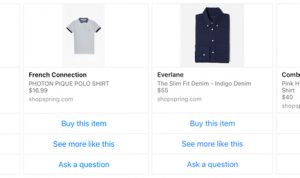 A website will draw much of its success from search engines. As a low cost, high reward strategy, search engine optimization is a road that all websites have traveled but only a few have succeeded in.
A website will draw much of its success from search engines. As a low cost, high reward strategy, search engine optimization is a road that all websites have traveled but only a few have succeeded in.
By building a website keeping the best on- and off-page optimization practices in mind, you can rank at the very top page of Google and enjoy thousands of organic traffic. You can then turn your traffic into leads and customers to increase your sales.
But before you can enjoy the benefits of a well-executed SEO strategy, you need to identify the components that make up the greater whole.
Below are the five ingredients that will make up your SEO campaign.
Keyword Research
Finding the right keywords to rank for your website is the most important step before you can execute different on- and off-page optimization tactics.
When choosing keywords, it is ideal to pick keywords that are searched the most times and with little competition from other websites.
To determine how many times the keywords are searched by users on Google, go to Google Keyword Planner and search for your desired keywords there. Look at the average monthly search volume to see the estimate number of times the keywords have been searched. You can filter the results from this row by global or local monthly search volume (for local SEO).
The tool will also return related keywords that you can include in your research. If the tool does not provide enough keyword suggestions, head on to Übersuggest for more lists of keywords to choose from. Another alternative to Google Keyword Planner is Keyword.io, which includes Autocomplete suggestions into the list.
These are the most used and popular keyword research tools that everybody uses. If you want another alternative, AuthorityMetrics is an upcoming keyword tool that will help you find the most profitable and transactional keywords in your niche.
Content Strategy
Your content strategy is the foundation where you website will stand on.
Now that you have chosen your keywords to optimize for, you need to identify the objectives, core message, and secondary messages that support the reason why you are building a website in the first place.
You will also need to figure out a way how your social media, blog, and landing pages will function towards achieving the main goal of your website. Do you want to earn money from the sales you make, build a community of paid members, or build a mailing list that you can monetize later?
Using your objectives, determine your target audience. Break them down to your desired demographics (age, gender, location, education, salary, etc.) You will need to create your ideal customer profile, which will be used as basis for creating your marketing strategy.
Conduct a competitor analysis in this stage. Use your keywords to find the highest ranking sites and pages. If the site is similar to yours, identify its strengths and weaknesses. Find a “gap” or a specific item in your agenda that they failed to put in their site so you can fill that gap with your site. For more information on how to do a competitor analysis, read this post on HubSpot.
Now that you have these data, create an editorial calendar for your blog or site. Come up with topics within your niche and create a bullet list that will be turned into a post. Use the keywords to optimize the content you will create (video, audio, landing pages, text, etc.). Schedule the posts that will be published ahead of time so you no longer have to think for topics to write on those dates. For a template of an editorial calendar, click here to read a post on CrazyEgg.
By refining these factors in your content strategy, you will get a bigger picture on how each of the content you create is geared towards meeting specific set of goals. These can be achieved with the help of SEO.
Site Architecture
Arguably the most important on-page SEO factor to consider, site architecture concerns itself with making your website easier for search engine spiders to crawl.
If your site has crawlability issues, some of your content (if not all) won’t be indexed on Google SERP.
To ensure that your pages will be indexed properly, create and upload a Sitemap to your website. This file informs the spiders of all the pages in your site so they can crawl them.
If you don’t have a Sitemap yet, use this site to generate one for you.
If you have a big site with thousands of pages in it, you need to create and edit your robots.txt. You can inform search engine spiders which pages and folders in your site that they shouldn’t crawl. Doing this will improve crawl efficiency.
Another factor that can cause issues with your site architecture are the overreliance of JavaScript and Flash content in your site. Not only will spiders be unable to crawl these content, but these take time to load on the page due to their size. Limiting use of these content will help you site load faster.
Link Building
One of the most frustrating aspects of SEO, link building has become a bane in the existence of online marketers. This is due to the constant changes made by Google to its algorithm. As a result, most of the link building tactics that spawned lots of spammers before eventually got penalized (article marketing, guest posting).
But when link building is done right, you can create sustainable and valuable backlinks to your website, which helps in increasing your SERP ranking.
To get a good idea on different types of link building tactics, head down to this comprehensive list compiled by Jon Cooper. You can filter the results (time, link value, dependency on other sources) to find the right tactic for you.
While the list offers a general overview on how to conduct the different tactics for your website, you may need more specific examples on how to conduct the link building strategies. For this, read this article by Venchito Tampon about link building strategies that work for 2015.
If you need more sustainable backlinks for your site, then you need to build relationships with site owners and woo them to linking back to your site. You can do this by using BuzzStream to prospect influencers in your niche and reach out to them. The key here is to not ask for a link outright – let the conversation naturally lead them to link back to your site without even asking them to. Here’s a great review on how BuzzStream is used to achieve this purpose.
Analytics
Learning what ticks your target audience is necessary to maximize your website for SEO.
With access to your website analytics like Google Analytics, you will be able to gain insight to your most visited pages by way of organic traffic. Using this data, you can replicate the process of content creation to achieve the same results for your upcoming posts.
The problem with Google Analytics is that it does not provide the keyword that brought visitors to your site pages. To counter this issue, read this page over at Moz to hack your Google Analytics for SEO purposes.
These processes are integral parts of a successful SEO mix to help your website rank for your desired websites. If you have other suggestions that I missed out above, please let us know by commenting below!
(279)








